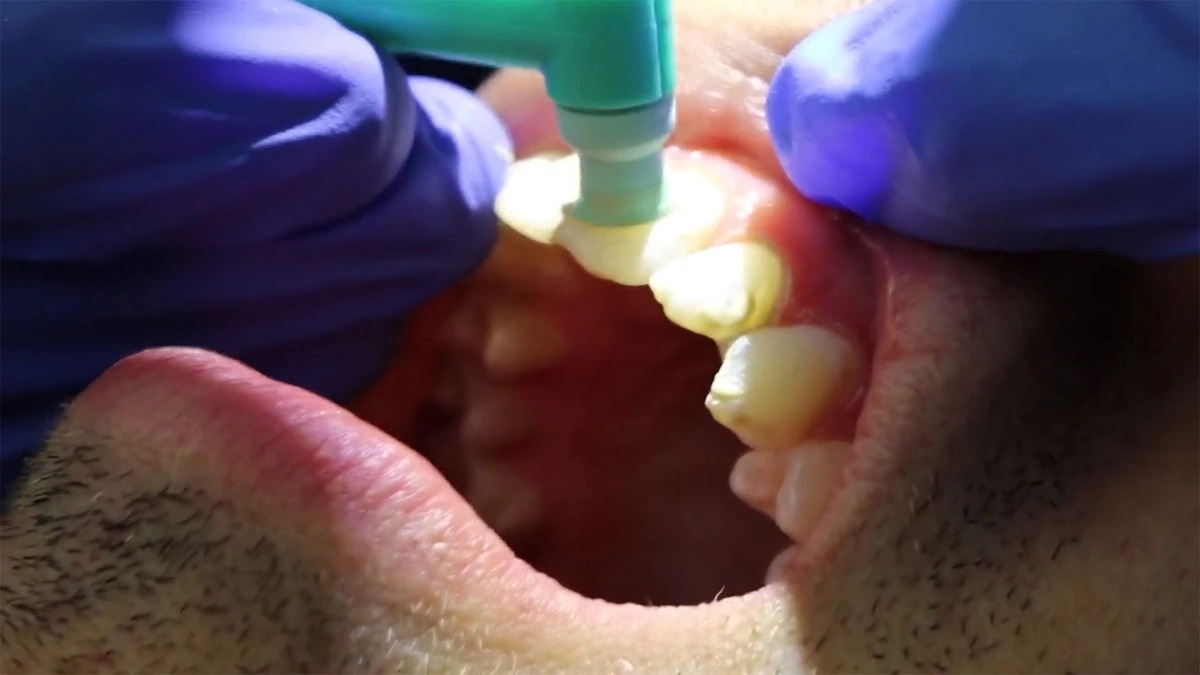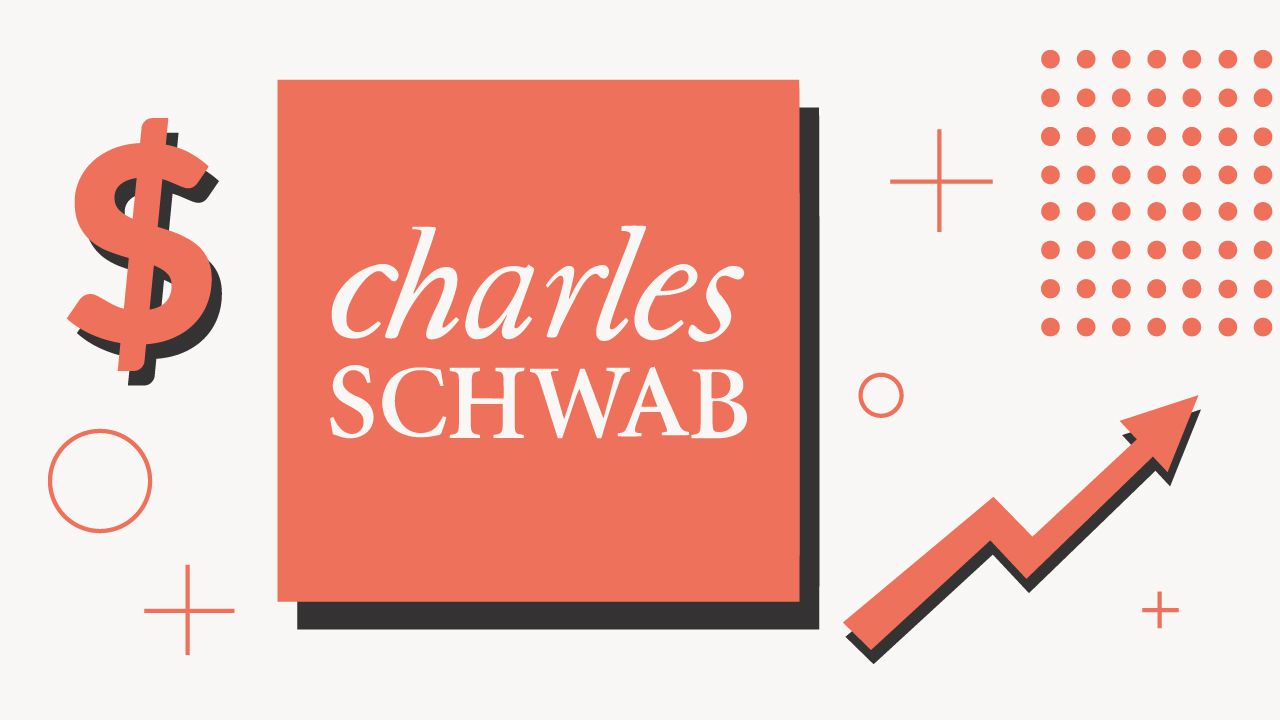Home>Finance>How Much Is A Cardiologist Visit With Insurance


Finance
How Much Is A Cardiologist Visit With Insurance
Published: November 23, 2023
Find out how much a cardiologist visit costs with insurance and get tips on managing your finances for medical expenses.
(Many of the links in this article redirect to a specific reviewed product. Your purchase of these products through affiliate links helps to generate commission for LiveWell, at no extra cost. Learn more)
Table of Contents
- Introduction
- Understanding Cardiology Visits
- Overview of Insurance Coverage for Cardiology Visits
- Factors Affecting the Cost of Cardiology Visits
- Average Cost of Cardiology Visits with Insurance
- What Does Insurance Typically Cover?
- Out-of-Pocket Expenses for Cardiology Visits
- Tips for Lowering the Cost of Cardiology Visits
- Conclusion
Introduction
Welcome to the world of cardiology – a branch of medicine that focuses on diseases and conditions of the heart and blood vessels. Whether you’re dealing with a heart condition or simply seeking preventative care, it’s essential to understand the cost of cardiology visits, especially if you have insurance coverage.
Cardiology visits are crucial for maintaining cardiovascular health and identifying potential issues early on. However, the cost of these visits can vary significantly depending on multiple factors, including insurance coverage, location, the complexity of the condition, and the type of facility you visit.
In this article, we’ll explore the intricacies of cardiology visit costs and delve into the specifics of insurance coverage. We’ll also provide tips on how to lower the cost of cardiology visits and navigate potential out-of-pocket expenses. By the end, you’ll have a better understanding of what to expect when it comes to paying for cardiology visits with insurance.
Understanding Cardiology Visits
Cardiology visits are medical appointments with a cardiologist, a specialized doctor who diagnoses and treats heart and cardiovascular conditions. These visits are essential for individuals with heart-related issues, as well as those seeking preventative care for optimal cardiovascular health.
During a cardiology visit, the cardiologist will typically perform a comprehensive evaluation, which may include:
- Taking a detailed medical history to understand any existing heart conditions or risk factors
- Conducting a physical examination to assess symptoms and signs of heart problems
- Ordering diagnostic tests such as electrocardiograms (ECG), echocardiograms, stress tests, or heart catheterizations to gather more information about the heart’s structure and function
- Interpreting test results and providing a diagnosis
- Developing a personalized treatment plan, which may involve medication, lifestyle changes, or further interventions
It’s important to note that the complexity and duration of a cardiology visit can vary depending on the individual’s condition. Some visits may be straightforward with minimal testing, while others may require more extensive evaluations and discussions with the cardiologist.
Regular cardiology visits are critical for managing chronic conditions, such as hypertension or heart disease, and for monitoring the effectiveness of treatments. Additionally, individuals without existing heart conditions should consider periodic cardiology visits for preventive care and early detection of potential problems.
Overview of Insurance Coverage for Cardiology Visits
Understanding your insurance coverage for cardiology visits is crucial to avoid unexpected expenses and financial burdens. Most insurance plans cover cardiology visits, but the extent of coverage can vary depending on factors such as your policy, network, and specific treatments or procedures involved.
Generally, insurance coverage for cardiology visits falls under the umbrella of specialty care or specialist visits. This means that you may have to meet certain requirements, such as obtaining a referral from your primary care physician, to ensure coverage. It’s essential to review your insurance policy or contact your insurance provider to understand the specific requirements and limitations.
In-network versus out-of-network care:
If you have health insurance, you’ll typically have two options for receiving cardiology care: in-network providers or out-of-network providers. In-network providers are those who have contractual agreements with your insurance company and have agreed to provide services at a predetermined rate. Visiting an in-network cardiologist will generally result in lower out-of-pocket costs for you.
On the other hand, out-of-network providers do not have contractual agreements with your insurance company. Visiting an out-of-network cardiologist may result in higher out-of-pocket costs or limited coverage, depending on your insurance policy. It’s important to check with your insurance provider to understand the extent of coverage for out-of-network services.
Treatment coverage and limitations:
Insurance coverage for cardiology visits typically includes consultation fees, diagnostic tests, and treatments deemed medically necessary by your healthcare provider. However, it’s essential to review your insurance policy for any specific coverage limitations or exclusions.
Some insurance plans may require prior authorization for certain tests or treatments, meaning you need approval from your insurance company before proceeding. Failure to obtain prior authorization can result in claim denials and increased out-of-pocket costs. Make sure to communicate with your healthcare provider and insurance company to ensure all necessary authorizations are in place.
Deductibles, copayments, and coinsurance:
It’s important to familiarize yourself with the financial aspects of your insurance coverage, such as deductibles, copayments, and coinsurance.
A deductible is the amount you must pay out of pocket before your insurance coverage kicks in. Once you meet your deductible, you may still be responsible for copayments or coinsurance.
A copayment is a fixed fee you pay at the time of service, such as a specified dollar amount for each cardiology visit. Coinsurance, on the other hand, is a percentage of the total cost that you’re responsible for paying after meeting your deductible.
Understanding your deductible, copayment, and coinsurance amounts will help you budget for cardiology visits and anticipate your out-of-pocket expenses.
Factors Affecting the Cost of Cardiology Visits
The cost of cardiology visits can vary greatly depending on several factors. Understanding these factors can help you anticipate and plan for the potential expenses associated with your cardiology care. Here are some key factors that can affect the cost of cardiology visits:
1. Type of visit and services required:
The complexity and nature of your cardiology visit can impact the cost. A routine check-up or consultation will generally be less expensive compared to visits that involve extensive diagnostic tests, procedures, or surgeries.
2. Facility and location:
Where you receive your cardiology care can also influence the cost. Larger medical centers or hospitals may have higher fees compared to smaller clinics or outpatient facilities. Additionally, the cost can vary based on the region or city where the facility is located.
3. Insurance coverage and network:
Your insurance coverage plays a significant role in determining the cost of cardiology visits. Visiting an in-network provider typically results in lower out-of-pocket expenses compared to out-of-network providers. It’s important to check if your insurance plan has any restrictions on certain providers or facilities.
4. Diagnostic tests and procedures:
If your cardiology visit requires diagnostic tests or procedures, such as electrocardiograms (ECG), echocardiograms, stress tests, or cardiac catherizations, these will add to the overall cost. Different tests have different price ranges, depending on the complexity and equipment used.
5. Specialist fees:
The fees charged by cardiologists for their expertise and services can vary. Factors such as experience, reputation, and location can influence the cost of their services.
6. Follow-up appointments and ongoing care:
If your cardiology visit involves follow-up appointments or regular monitoring of your condition, these additional visits can contribute to the overall cost. It’s important to consider the frequency and duration of such appointments when estimating the cost of ongoing cardiology care.
7. Additional medications and treatments:
Depending on your diagnosis and treatment plan, you may require medications or additional treatments. These can add to the cost of your cardiology care. It’s important to consult with your healthcare provider and insurance company to understand the coverage and potential costs of any prescribed medications or treatments.
It’s worth noting that the cost of cardiology visits can vary widely, and it’s essential to discuss potential expenses with your healthcare provider and insurance company. Understanding these factors and planning accordingly can help you navigate the financial aspects of your cardiology care.
Average Cost of Cardiology Visits with Insurance
The average cost of cardiology visits with insurance can vary depending on various factors, including your insurance plan, the type of visit, and the specific services required. While it’s challenging to provide an exact figure, we can discuss some general ranges to give you an idea of what to expect.
For a routine cardiology visit, including consultation and examination, the average cost can range from $100 to $300, depending on your location and the complexity of the visit. This cost typically includes the fees charged by the cardiologist and may vary based on their level of expertise.
If additional diagnostic tests are necessary, such as electrocardiograms (ECG), stress tests, or echocardiograms, the cost can increase significantly. These tests can range in price from $200 to $1000 or more, depending on the specific test and the facility where it is performed.
Keep in mind that insurance coverage can greatly reduce the out-of-pocket costs for cardiology visits. Your insurance plan may cover a certain percentage of the fees or require you to pay a copayment or coinsurance. Additionally, if you have met your deductible for the year, your insurance may cover a higher percentage of the costs.
It’s important to review your insurance policy to understand the coverage details, including any limits, deductibles, copayments, or coinsurance amounts. Additionally, check if there are any restrictions on specific procedures or specialists, as these factors can influence the overall cost of your cardiology visits.
If you have questions about the cost of cardiology visits with your insurance, it’s recommended to contact your insurance provider directly. They can provide you with specific information regarding your coverage and help you estimate the potential out-of-pocket expenses for your cardiology care.
Remember, these cost estimates are averages and can vary depending on your individual circumstances. It’s essential to consult with your healthcare provider and insurance company for more accurate details regarding the cost of cardiology visits in your specific situation.
What Does Insurance Typically Cover?
Insurance coverage for cardiology visits can vary depending on your specific insurance plan and policy. However, there are common elements that insurance typically covers when it comes to cardiology care. Understanding these coverages can help you navigate the costs associated with your visits.
1. Consultation and examination fees:
Insurance typically covers the fees charged by the cardiologist for your consultation and examination. This can include a thorough review of your medical history, a physical examination, and an assessment of your symptoms and overall cardiovascular health.
2. Diagnostic tests and procedures:
Insurance often covers a range of diagnostic tests and procedures that may be necessary during your cardiology visit. These can include electrocardiograms (ECG), echocardiograms, stress tests, or cardiac catheterizations. However, it’s important to note that insurance coverage may have specific criteria or limitations for certain tests, requiring prior authorization.
3. Medications:
If medications are prescribed as part of your cardiology treatment plan, insurance typically covers a portion of the cost. However, it’s essential to review your insurance policy to understand the specific coverage details, including any copayments or requirements for generic alternatives.
4. Follow-up visits:
Insurance generally covers the cost of follow-up visits with your cardiologist. These visits are important for monitoring your condition, assessing the effectiveness of your treatment plan, and making any necessary adjustments.
5. In-patient care and surgeries:
If you require in-patient care, such as a hospital stay or cardiac surgery, insurance will typically cover a significant portion of the costs associated with these services. However, it’s important to review your policy for any specific requirements or limitations.
While insurance typically covers the essentials of cardiology care, it’s important to note that there may still be out-of-pocket expenses. This can include deductibles, copayments, or coinsurance, which you are responsible for paying. Additionally, some tests or treatments may not be covered if they are deemed experimental or not medically necessary.
It’s crucial to review your insurance policy carefully and consult with your insurance provider to understand the details of your coverage. They can provide you with specific information about what is covered and any potential limitations or requirements related to cardiology visits.
Out-of-Pocket Expenses for Cardiology Visits
While insurance coverage helps mitigate the costs of cardiology visits, it’s important to understand that there may still be out-of-pocket expenses associated with your care. These expenses can vary depending on your insurance plan, policy, and the specific services you receive. Here are some potential out-of-pocket expenses to consider:
1. Deductible:
Many insurance plans have a deductible, which is the amount you must pay out of pocket before your insurance coverage begins. The deductible can vary from plan to plan, and it typically resets at the start of each policy year. Any cardiology visits or services you receive before meeting your deductible will be your responsibility to pay in full.
2. Copayments or Coinsurance:
Once you’ve met your deductible, your insurance plan may require copayments or coinsurance for cardiology visits. A copayment is a fixed fee you pay at the time of the visit, while coinsurance is a percentage of the total cost that you’re responsible for paying. For example, your plan may require a $20 copayment for each cardiology visit or require you to pay 20% of the total cost as coinsurance. These amounts can add up, especially if you have multiple visits or require additional services or procedures.
3. Out-of-Network Charges:
If you choose to see a cardiologist who is out-of-network for your insurance plan, there may be additional out-of-pocket expenses. Out-of-network providers may charge higher fees, and your insurance coverage may be limited or not apply at all. It’s important to check with your insurance company to understand the extent of coverage for out-of-network services and the potential impact on your expenses.
4. Non-Covered Services:
Some cardiology services or treatments may not be covered by your insurance plan. These could include certain diagnostic tests, procedures, or alternative therapies. If you choose to receive these services, you will be responsible for the full cost. It’s crucial to review your insurance policy or contact your insurance provider to understand the specific services that may not be covered.
5. Prescription Medication Costs:
If your cardiology treatment involves prescribed medications, you may have out-of-pocket costs for the copayment or coinsurance associated with those drugs. Different medications have different coverage levels and cost-sharing requirements, so it’s important to review your insurance policy and consult with your pharmacist to understand the potential expenses.
Understanding these potential out-of-pocket expenses can help you budget and plan for your cardiology visits. Review your insurance policy, contact your insurance provider, and communicate with your healthcare provider to get a clear understanding of the specific costs you may incur. Being prepared and informed will help you navigate the financial aspect of your cardiology care more effectively.
Tips for Lowering the Cost of Cardiology Visits
Cardiology visits and treatments can sometimes be expensive, but there are strategies you can employ to help lower the overall cost. Consider the following tips to minimize your expenses while still receiving quality cardiology care:
1. Review your insurance coverage:
Take the time to thoroughly understand your insurance policy, including coverage details, copayments, deductibles, and networks. Being knowledgeable about your plan helps you make informed decisions that can potentially save you money.
2. Seek in-network providers:
Choose cardiologists and facilities within your insurance network. In-network providers have agreed upon contracted rates with your insurance company, which means you’ll likely pay lower out-of-pocket expenses when compared to out-of-network providers.
3. Shop around for pricing:
Before scheduling cardiology visits or procedures, research different providers and facilities to compare prices. Prices can vary significantly from one facility to another, so take advantage of this variation to find more cost-effective options.
4. Discuss payment options with your healthcare provider:
If you’re concerned about the cost of cardiology visits, talk to your healthcare provider about potential payment plans or discounted rates. Some providers may offer flexible payment options or financial assistance programs that can help alleviate your financial burden.
5. Opt for generic medications:
If prescribed medications are part of your cardiology treatment plan, ask your healthcare provider if there are generic alternatives available. Generic medications are generally more affordable than brand-name counterparts and can help reduce your medication expenses.
6. Use prescription discount programs:
There are various prescription discount programs available that can help lower the cost of your medications. These programs offer discounts or coupons that can be used at participating pharmacies, potentially saving you significant amounts on your prescription costs.
7. Request pre-authorization for tests and procedures:
Some insurance plans require pre-authorization for specific diagnostic tests or procedures. Make sure to follow the necessary steps to obtain pre-authorization, as failure to do so may result in denied claims and higher out-of-pocket costs.
8. Practice preventive care:
Engaging in preventive measures can help reduce the need for extensive cardiology visits or treatments. Follow a heart-healthy lifestyle, which includes eating a balanced diet, exercising regularly, and managing stress. By taking proactive measures to maintain your heart health, you may be able to prevent the development of more severe cardiovascular conditions.
Remember, while it’s essential to be mindful of the cost of cardiology visits, it’s equally important to prioritize your health. Consult with your healthcare provider to ensure you’re receiving the necessary care while exploring cost-saving strategies.
Conclusion
Cardiology visits play a vital role in maintaining cardiovascular health and addressing any heart-related concerns. Understanding the cost of these visits, as well as your insurance coverage, is crucial to navigating the financial aspect of your cardiology care. By being knowledgeable and proactive, you can take steps to lower the cost of cardiology visits while still receiving quality care.
Insurance coverage plays a significant role in determining the cost of cardiology visits. Familiarize yourself with your insurance policy, network, and coverage details to understand what services are covered, any limitations or requirements, and the potential out-of-pocket expenses you may face.
Factors such as the complexity of the visit, the type of facility you visit, and any necessary diagnostic tests or procedures can affect the cost of cardiology visits. By researching different providers, seeking in-network care, and discussing payment options with your healthcare provider, you can potentially lower your expenses.
Additionally, engaging in preventive care, such as following a heart-healthy lifestyle, can help reduce the need for extensive cardiology visits or treatments in the first place. Taking steps to prioritize your cardiovascular health can ultimately contribute to long-term cost savings.
Remember, it’s essential to strike a balance between managing costs and ensuring you receive the necessary care for your heart health needs. Stay informed, communicate with your healthcare provider and insurance company, and explore cost-saving strategies while keeping your health as the top priority.
By employing these tips and being proactive in managing the financial aspects of your cardiology care, you can navigate the cost of cardiology visits with confidence and focus on achieving optimal cardiovascular health.














